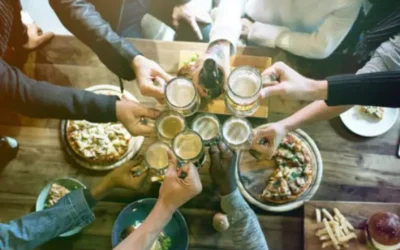100+ Sobriety Tattoo Ideas To Mark Your Sober Journey
The choice to adorn oneself with a phoenix tattoo demonstrates courage and serves as a visual testament to the strength it takes to overcome addiction. It is an empowering symbol that encourages individuals in recovery to embrace their past struggles while embracing their newfound freedom. The Alcoholics Anonymous symbol also looks like (and is) composed of a triangle within a circle. In some cases, this tattoo works as a great reminder of a person’s commitment to living a better life. However, in the event that a person relapses, this sobriety tattoo may instead be a painful reminder of their initial failure to become substance-free.
Harmony’s Wave: Serene Sobriety Tattoo for Recovery – Symbolic and Inspirational Design
The act of getting a tattoo can be a transformative experience in itself, allowing individuals to reclaim their bodies and rewrite their narratives. If you or a loved one is struggling with addiction and are looking for ways to start your recovery process, know that you are not alone, and help IS available. Thus, these tattoos can be placed in a more discrete area, making them less subject to judgment of others. Of course, those who are less worried about other peoples’ opinions can make this a more visible piece. This kind of sobriety tattoo is often going to be done in a traditional style.

Recovery Symbols to Maintain Sobriety

It’s a symbol for those seeking a constant reminder of their commitment to sobriety. Explore recovery tattoo ideas like this to celebrate your path to a new sobriety tattoo ideas life. This ink captures time standing still with a clock face and cityscape; it’s perfect for those on a sobriety journey, symbolizing lasting change.
- Fortunately, recovery is always possible, so if you’ve turned things around, congratulate yourself.
- For starters, many people may choose to get the exact time and date they began their sobriety permanently inked on their body.
- The AA symbol is often positioned on various body parts or worn as a necklace or bracelet.
- Sobriety tattoos can help ease this struggle, through serving as a permanent badge of a person’s determination to become sober and achieve a more stable life.
- This concerns professionals in recovery because a tattoo can serve as a permanent reminder of a relapse and might hinder recovery.
Popular Posts
With a heart charm representing love and self-care, it’s a popular recovery tattoo idea that holds deep meaning for those on a sobriety journey. Another tattoo you might find on recovering alcoholics is the triangle. This is a symbol of an equilateral triangle, and it may also feature a circle around the triangle. The triangle represents the legacies of AA, which include unity, recovery, and service. The circle is meant to represent AA itself or the community that is available to support you through your journey. Placement of the triangle symbol is very diverse given the simplicity of the logo.
I am committed to staying current with the latest advancements in medical science and am always eager to work alongside fellow behavioral healthcare professionals at Find Addiction Rehabs. Thus, these words can serve as a small reminder of a person’s commitment to their recovery journey, and help them move past particularly difficult periods. Similar to the serenity prayer typically used by those recovering from alcohol abuse, there are several inspiring words that someone battling drug addiction may want tattooed on them. Sobriety tattoos for someone recovering from drug abuse may have more artistic elements to them than those used by someone recovering from alcohol addiction.
Not-So-Secret Recovery-Related Images
12 Mental Health Tattoo Ideas to Inspire Your Next Ink – InStyle
12 Mental Health Tattoo Ideas to Inspire Your Next Ink.
Posted: Wed, 03 Jan 2024 08:00:00 GMT [source]
- The sobriety tattoo design, the colors, and the vibe come together to create a sobriety tattoo that you can’t take your eyes off of.
- I’ve seen clients’ faces light up with pride as they show off these symbols of their sober journeys.
- However, this could also explode into a full back piece using elements to commemorate your alcohol free lifestyle.
- In addition to being pieces of art that we carry throughout our lives, they also can be a means of catharsis.


